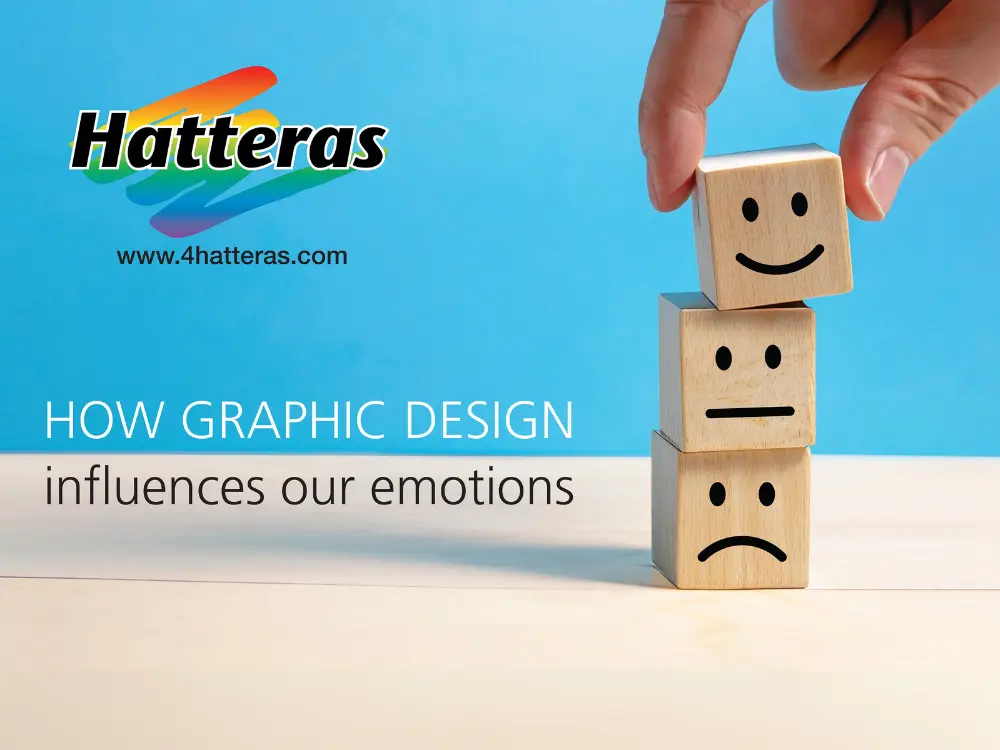In our modern world filled with visual stimuli, graphic design for print media stands as a powerful form of communication. Graphic design is capable of transcending language barriers and connecting with audiences on a profound emotional level. Beyond mere aesthetics, graphic design influences how we perceive the world around us and shapes the emotions we experience in response to the visual cues presented.
From the captivating logos that define global brands to the immersive user interfaces that guide our digital interactions, graphic design plays a pivotal role in shaping our perceptions and eliciting emotional responses.
8 Ways Graphic Design Influences Our Perceptions and Emotions
1. Visual Communication
Graphic design is a form of visual communication that transcends language barriers. It distills complex ideas and information into visually engaging and easily understandable representations. Using colors, shapes, typography, and imagery, you can convey specific messages and evoke particular emotions. For example, warm colors like red and orange may create a sense of urgency or excitement, while cooler colors like blue and green can evoke calmness and serenity.
2. Brand Identity
A well-crafted and consistent graphic design is crucial for establishing a brand's identity and personality. Logos, packaging, website design, and marketing materials visually represent a brand and create a certain perception in the minds of consumers. A strong brand identity can evoke feelings of trust, reliability, and loyalty, fostering a deep emotional connection between the brand and its audience.
3. User Experience
In the digital age, user experience plays a critical role in shaping perceptions and emotions towards products and services. Intuitive and aesthetically pleasing graphic designs can enhance positive emotions and improve overall user satisfaction. Effective graphic design contributes to clear navigation, efficient information presentation, and seamless interactions, leading to more positive experiences. Conversely, poor design choices can lead to frustrations, confusion, and negative perceptions of a product or service.
4. Emotional Appeal
Graphic design has the power to tap into human emotions and create a profound impact. Designers can use imagery, color psychology, and visual metaphors to evoke joy, nostalgia, empathy, or even sadness, depending on the intended message and purpose of the design. Graphic design can establish lasting connections and leave a memorable impression by striking an emotional chord with the audience.
5. Visual Hierarchy
Through strategic graphic design, information can be organized in a hierarchical manner, guiding the viewer's attention and understanding. By employing size, contrast, and placement, designers can control what information stands out and how the overall content is perceived. A well-structured visual hierarchy ensures that essential elements are emphasized, improving comprehension and reinforcing the intended message.
6. Cultural and Societal Influences
Cultural and societal norms can deeply influence graphic design. What is considered aesthetically appealing or appropriate can vary across different regions and communities. Design choices that align with cultural expectations can strengthen the emotional connection between a design and its audience. Graphic design can establish relevance and resonance by reflecting the values and preferences of a particular group.
7. Call to Action
Effective graphic design can influence behaviors and actions. Whether encouraging someone to make a purchase, sign up for a service, or support a cause, well-designed visuals and persuasive elements can drive action and decision-making. By incorporating compelling calls to action, graphic design can motivate individuals to engage and participate actively.
8. Storytelling
Graphic design is a powerful tool for storytelling. Through visuals, designers can communicate narratives, evoke emotions, and connect with audiences on a more personal level. Using visual storytelling techniques, such as illustrations, infographics, and animations, designers can make complex information relatable and engaging, leaving a lasting impact on the audience.
Do You Need Help With Graphic Design for Your Commercial Print Project?
At Hatteras, we work to ensure our customers are satisfied with their intended perceptions and emotions. We understand that graphic design goes far beyond just aesthetics. Graphic design truly does have the power to evoke emotions, shape perceptions, and drive human behaviors. We should be mindful of the psychological and emotional impact their work may have on the audience, ensuring that the message conveyed aligns with the intended purpose. If done correctly, graphic design can foster meaningful connections with the audience.
At Hatteras, we have a full staff of professional graphic designers who can help create a custom design for you. To learn more about our graphic design services, click here or request a quote to get started!



